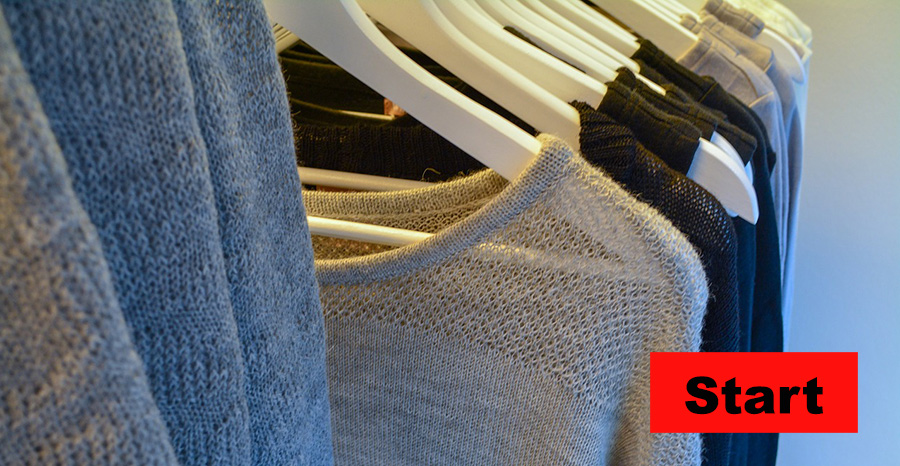You can take part in our interactive wardrobe audit by counting the number of pairs of jeans, t-shirts and socks you own. Instant feedback will compare your data with others’ and give you a chance to reflect on your clothing ownership and use. This survey forms part of the OU's contribution to the Economic and Social Research Council's Festival of Social Science.
For best results when using this survey, use a modern web browser. Upgrade to the latest version of Internet Explorer or try a free alternative like Google Chrome, Firefox or Safari.
 Select the image to begin the interactive wardrobe audit.
Select the image to begin the interactive wardrobe audit.
Thank you for completing the survey
Were you surprised how many pairs of socks you really owned? How did this compare to others in the survey? Had you ever really thought about how long you wear your clothes before washing them? Have a look at the blogs giving a range of perspectives about the clothing industry and take part in the discussion in the Comments section below to explore how clothing ownership and use could be made more sustainable.
The brief survey that you have just completed is an example of one type of Social Science research often used in social marketing. Social marketing research is used to encourage changes in consumer behaviour such as clothing ownership and use. The survey uses a number of behaviour change techniques. First, it explores how individuals currently behave and by asking details about their gender, age and normal style of clothing, puts these behaviours into groups or segments for comparison. This comparison with others with similar demographic characteristics uses a normative behaviour approach, where an individual is prompted to consider and possibly change behaviour in response to seeing what is ‘normal’.
We hope you enjoyed participating in the survey. If you would like to know more about Social Marketing, please visit the Institute of Social Marketing website.
Rate and Review
Rate this activity
Review this activity
Log into OpenLearn to leave reviews and join in the conversation.
Activity reviews